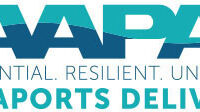All Hands on Board!

In the face of an unprecedented cargo surge that has led to record volumes and widespread congestion, ports and their supply chain partners are bravely adapting, experimenting and exploring creative new solutions – and incorporating these ideas in record time. Improved collaboration, infrastructure investments, strengthened freight policies, 24/7 terminal operations and digitized information are just a few of the ideas to be fast-tracked.
Even the ports that are not experiencing high levels of congestion will benefit from these ideas, as these new practices and principles are designed to help the entire supply chain work more smoothly – even during a crisis. They also address the interdependence within the cogs of the supply chain and how ports can directly affect the efficiency of the entire mechanism.
Ports and their partners must “address issues with the entire supply chain that have finally caught up with us,” said Mario Cordero, executive director of the Port of Long Beach.
“Every bit of the supply chain is stressed, and we need to work on every element,” added Gene Seroka, executive director of the Port of Los Angeles.
Investing in Infrastructure
The need to strengthen infrastructure at the ports and throughout the supply chain has come into sharp focus during the congestion challenges. Infrastructure shortcomings are a clear factor in the crisis, according to John Porcari, port envoy to the Biden administration’s Supply Chain Disruptions Task Force, and consequently infrastructure improvements are key to preparing for the challenges ahead. He said, “There’s a real case to be made for public infrastructure investments for the ports and inland.”
“This is not your grandfather’s goods movement chain. It is, however, in many cases, your grandfather’s infrastructure that we’re working with,” said Porcari at an October press conference. “This global supply chain works only as well as the weakest link.”
Many ports have prioritized investments in infrastructure improvements to better handle large capacity demands. For instance, the Port of Long Beach has committed to investing $1.6 billion in strategic projects in the next decade, including the Pier B On-Dock Rail Support Facility, an $870 million project designed to allow for a much greater use of on-dock rail at the port and thereby reduce truck trips. In June, the port completed the third phase of the Long Beach Container Terminal, which adds 1 million TEU of annual capacity.
“Throughout the height of the COVID-19 pandemic and amid this historic cargo surge, we continue to remind ourselves that in a crisis, we build,” Cordero said.
Similarly, Melanie Stambaugh, senior manager for communications with The Northwest Seaports Alliance, said the NWSA recognizes “the importance of strategically investing in critical infrastructure before a crisis occurs.” Infrastructure investments made now anticipate future crises. She pointed to phase one of the Terminal 5 Modernization Project, which will open in January at the Port of Seattle and add capacity and additional on-dock rail to gateway operations.
“The current congestion challenges could not be predicted when this investment was originally made, however, by continually investing in improved infrastructure our gateway is better equipped with a relief opportunity during the current supply chain challenges,” Stambaugh said.
At October’s Agriculture Transportation Coalition’s annual conference, Porcari said he wants states to improve their federally mandated freight plans with an eye on better infrastructure to support the supply chain.
“One of the things we think over the long term that will make a difference is better state freight plans that lead to capital project investments in both the public and private sector,” Porcari said.
Creative Solutions
In response to the cargo surges, ports and their partners have implemented fresh and creative approaches that could lead to long-term changes in customary port practices. For instance, the ports of Los Angeles and Long Beach have been early adopters of pilots for 24/7 operations that keep the supply chain moving around the clock with a goal of reducing the pileups of full and empty intermodal containers.
Porcari said the federal government is working with others in the supply chain, including railroads, trucking companies and major retailers to operate 24/7 and take advantage of off-peak capacity opportunities. “We’ve secured commitments from some of the largest of the cargo owners to move to a 24/7 distribution model that will really help the nation clear the docks,” Porcari said. “It’s certainly become clear that as a nation we need to move to a 24/7 supply chain.”
Cordero agreed that 24/7 operations are not simply an attempt at a short-term fix. Instead, they can help bolster efficiency and head off future problems.
“It’s a long-term vision to move to full 24/7 operations throughout the supply chain, but we are starting here in Long Beach,” Cordero said. “High-performing terminals in Asia already operate on a 24/7 basis, and our supply chain needs to adapt to that reality. With the growth of e-commerce, consumers can shop as easily at 4 in the morning as 4 in the afternoon, and on top of that, they expect rapid delivery. We believe 24/7 operations will help address how we could do things differently in the future, so that we can accommodate the expected cargo growth and rising consumer demand.”

Among other fresh efforts, Griff Lynch, executive director of the Georgia Ports Authority, said at the Agriculture Transportation Coalition’s annual conference in October that the GPA has worked with the federal task force and Norfolk Southern and CSX railroads to implement the South Atlantic Supply Chain Relief program, in which inland locations with connections to truck or rail are set up to provide off-dock areas to move containers stuck at the port.
“We think this could make a huge difference not only for importers, but as we clear out our yard, open up the field to receive exports and get back to some of those longer [receiving gate]windows that we had,” Lynch said, according to Freight Waves.
In that vein, Cordero said the Port of Long Beach’s 64-acre staging yard created during the current challenges – which it dubbed Short Term Overflow Resource (STOR) – has been a major success and will remain open when the cargo surge eases.
Meanwhile, the Florida Ports Council and Port Tampa Bay have reached out to retailers about shifting some of their shipping to that state’s ports via the Panama Canal, saying Florida “should not be dependent on supply chains from far-away, out-of-state ports and logistics networks,” according to Raul Alfonso, executive vice president and chief commercial officer of Port Tampa Bay.
“We believe that this ongoing crisis has brought to the forefront the need for diversification of supply chains,” Alfonso said. “All retailers should have the ability to maintain an efficient supply chain flow for their goods – not only on the ocean side – to different ports and gateways without having to deal with such delays as they currently have.”
Collaboration Is Key
Many ports have been organizing and participating in collaborations to address the congestion challenges and search throughout the supply chain for solutions.
For instance, the Port of Long Beach hosted the California Supply Chain Success Summit in September “to develop immediate and long-term solutions to congestion.”
“In the end, this is still a relationship-based business and keeping everybody talking together at the table is what’s going to get us to the next level,” Seroka said.
In response to the congestion challenges, Stambaugh said the NWSA started the Gateway Performance Taskforce, a collaboration of industry stakeholders that address challenges in the gateway. Stambaugh said the group likely will continue even after the congestion issues ease to facilitate broad input from stakeholders on major gateway challenges.
Stambaugh said strong relationships across the supply chain are crucial to responding quickly when challenges arise.
“The maritime industry and supply chain are highly interconnected,” Stambaugh said. “When unpredictable crises occur, understanding the needs of the various stakeholders in the supply chain is critical. Through communicating with industry partners, challenges can be identified, solutions can be discussed and adjusted operations can commence.”
Technology promises to strengthen partnerships and improve collaboration. The Port of Los Angeles has implemented a port optimizer that provides it with a line of sight extending as far as 40 days to see the cargo coming its way, allowing the port to share that information with the supply chain community to appropriately plan and prepare.


Seroka said that level of supply chain visibility could have far-reaching benefits if it was implemented widely throughout the supply chain.
“We just need more people to join us,” Seroka said. “I’ve called for a national system that looks like this, though not from a regulatory standpoint. Think of it as a [national]heat map.”
Weston LaBar, CEO of the Harbor Trucking Association, wrote in a commentary for the Intermodal Association of North America that bolstering technological solutions could help ease some of the issues creating congestion at the ports.
“As shippers want more visibility and accountability, one of the easiest ways to provide these solutions and ease port congestion is to integrate supply chain participants digitally,” LaBar said. “Creating standards around data and application program interface integrations will allow for each node of the supply chain to be better prepared to move cargo. Investing in accessible digital infrastructure that will generate, process and share data in a safe manner will allow for a more predictable and transparent supply chain.”
Stambaugh said she has seen ports embrace technological solutions during the pandemic, and she expects that emphasis to endure.
“The pandemic has enabled ports to utilize technology to facilitate business in new ways,” Stambaugh said. “Many of the newly implemented technologies will likely persist post-pandemic.”
Long-Term Resilience
Seroka said the ease of buying products online and the convenience of asking for them to be delivered to one’s door is not going away.
“For us in the port business and our supply chain partners, it’s that omnichannel distribution method that we really have to hone in,” Seroka said. “We’ve got to focus on how we get through fulfillment centers, onto the carriers and to the front doorsteps or pickup locations. For the American consumer, we’ve got to get better at that part of it.”
Building long-term resilience to the array of challenges that ports face is “an ongoing journey,” Stambaugh said. And resilience is necessary for ports to maintain efficient operations.
“Whether preparing for a physical disaster, a breakdown in the transportation network, or a pandemic, the work to prepare for uncertainty is never complete,” Stambaugh said.
The NWSA bolstered its resilience planning during the congestion challenges with the development of the Vulnerability Assessment and Response Framework, which will look at a suite of hazards that could affect both the NWSA’s harbors and the larger regional gateway.
“This planning effort will help our organization identify strategies that increase Beachour resilience before a disaster occurs,” Stambaugh said, though acknowledged there is always unpredictability when it comes to crises.
“While making efforts toward resiliency are important, we recognize that no amount of preparation will fully prepare ports for what is to come,” Stambaugh said. “Each crisis is unique and poses different challenges to each part of the maritime system.”
Alfonso said preparedness is the key to resilience. Alfonso points to risk assessments, emergency response planning and training, and investment in infrastructure as the best ways to building resilience to unexpected challenges.
“It is important that we understand our vulnerabilities and have protocols in place to manage through crisis situations with minimal disruption,” Alfonso said.
Seroka said ports and their partners have worked hard to manage the intense demands the pandemic has brought, but the current congestion challenges have helped emphasize to ports that “we’ve still got a lot to do.”
“I think that transportation has kept things moving all along,” Seroka said. “Even when everything else shut down, we could still buy goods because of our transportation system. Worldwide, 90% of products move on water today, and that will continue. We’ve just got to keep learning from what happens.”



